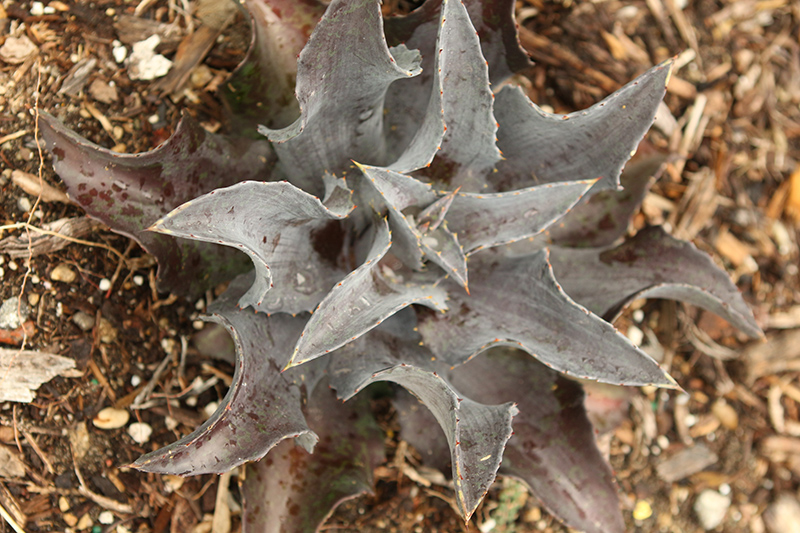Night Owl Mangave
Description
This attractive selection produces a rosette of undulating, near-black succulent leaves with heavy, dark spotting; leaves eventually take on gray tones; grown primarily for foliage; a great low-maintenance patio plant
Landscape Attributes
Night Owl Mangave is an herbaceous perennial with a shapely form and gracefully arching foliage. Its relatively coarse texture can be used to stand it apart from other garden plants with finer foliage.
Night Owl Mangave is recommended for the following landscape applications;
Planting & Growing
Night Owl Mangave will grow to be about 8 inches tall at maturity, with a spread of 18 inches. It grows at a fast rate, and under ideal conditions can be expected to live for approximately 5 years. As an herbaceous perennial, this plant will usually die back to the crown each winter, and will regrow from the base each spring. Be careful not to disturb the crown in late winter when it may not be readily seen!
This plant should only be grown in full sunlight. It prefers dry to average moisture levels with very well-drained soil, and will often die in standing water. It is considered to be drought-tolerant, and thus makes an ideal choice for a low-water garden or xeriscape application. It is not particular as to soil type or pH. It is somewhat tolerant of urban pollution. This particular variety is an interspecific hybrid.
Night Owl Mangave is a fine choice for the garden, but it is also a good selection for planting in outdoor pots and containers. It is often used as a 'filler' in the 'spiller-thriller-filler' container combination, providing a canvas of foliage against which the thriller plants stand out. Note that when growing plants in outdoor containers and baskets, they may require more frequent waterings than they would in the yard or garden. Be aware that in our climate, this plant may be too tender to survive the winter if left outdoors in a container. Contact our experts for more information on how to protect it over the winter months.

